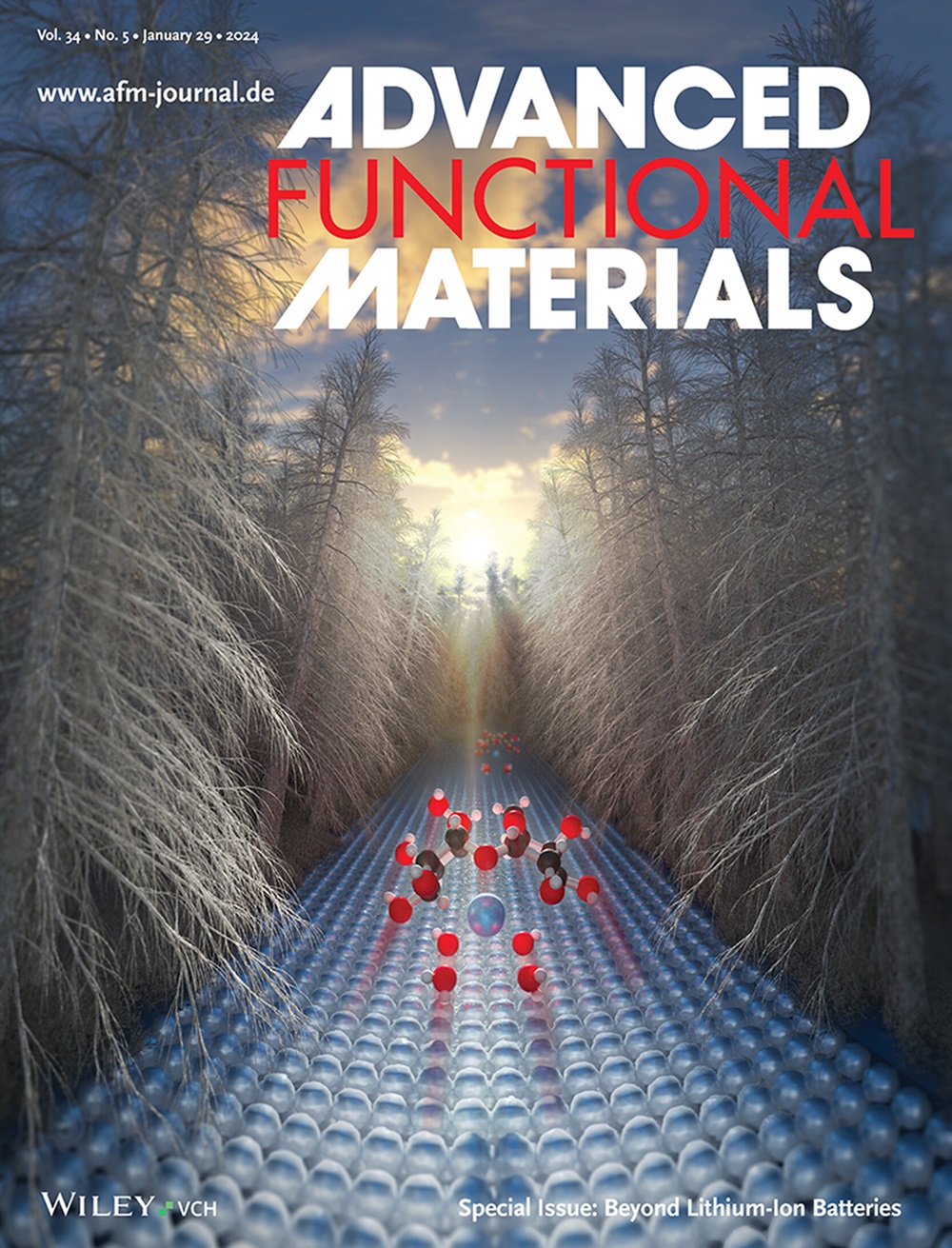3D Lead-Free Double Perovskite via Anchoring A-Site Cation for Ultralow Dose and Stable X-Ray Detection
IF 18.5
1区 材料科学
Q1 CHEMISTRY, MULTIDISCIPLINARY
引用次数: 0
Abstract
3D lead-free hybrid double perovskites exhibit remarkable potential for direct X-ray detection owing to their strong photon attenuation capabilities, efficient charge mobility, and low-cost fabrication. However, the development of new 3D double perovskites based on large organic cations remains challenging due to the Goldschmidt tolerance factor constraint, which impedes further exploration of their potential in radiation detection. Herein, a new 3D lead-free double perovskite (Mor)2RbSbI6 (1, Mor = morpholinium) is synthesized, featuring the dense perovskite framework anchored by A-site cations. The high-quality single crystals of 1 present a high mobility-lifetime product (1.52 × 10−3 cm2 V−1) and low dark current drift, enabling it to achieve simultaneously a high sensitivity (1.09 × 104 µC Gyair−1 cm−2) and an ultralow detection limit (3.1 nGyair s−1) under identical operating voltage. Meanwhile, the A-site cation anchoring strategy prevents ion migration-induced structural collapse during X-ray detection, thereby improving its radiation hardness and operating stability. These findings provide crystal structural insights to design new types of perovskite materials for “green” and high-performance radiation detectors.

三维无铅混合双包晶因其强大的光子衰减能力、高效的电荷迁移率和低成本的制造工艺,在直接 X 射线探测方面具有显著的潜力。然而,由于哥德施密特公差系数的限制,开发基于大有机阳离子的新型三维双包晶仍具有挑战性,这阻碍了对其辐射探测潜力的进一步探索。本文合成了一种新型三维无铅双包晶石 (Mor)2RbSbI6(1,Mor = 吗啉鎓),其特点是由 A 位阳离子锚定致密的包晶石框架。1 的高质量单晶具有高迁移率-寿命积(1.52 × 10-3 cm2 V-1)和低暗电流漂移,使其能够在相同的工作电压下同时实现高灵敏度(1.09 × 104 µC Gyair-1 cm-2)和超低检测限(3.1 nGyair s-1)。同时,A 位阳离子锚定策略防止了 X 射线探测过程中离子迁移引起的结构坍塌,从而提高了其辐射硬度和工作稳定性。这些发现为设计 "绿色 "和高性能辐射探测器的新型过氧化物晶材料提供了晶体结构见解。
本文章由计算机程序翻译,如有差异,请以英文原文为准。
求助全文
约1分钟内获得全文
求助全文
来源期刊

Advanced Functional Materials
工程技术-材料科学:综合
CiteScore
29.50
自引率
4.20%
发文量
2086
审稿时长
2.1 months
期刊介绍:
Firmly established as a top-tier materials science journal, Advanced Functional Materials reports breakthrough research in all aspects of materials science, including nanotechnology, chemistry, physics, and biology every week.
Advanced Functional Materials is known for its rapid and fair peer review, quality content, and high impact, making it the first choice of the international materials science community.
 求助内容:
求助内容: 应助结果提醒方式:
应助结果提醒方式:


